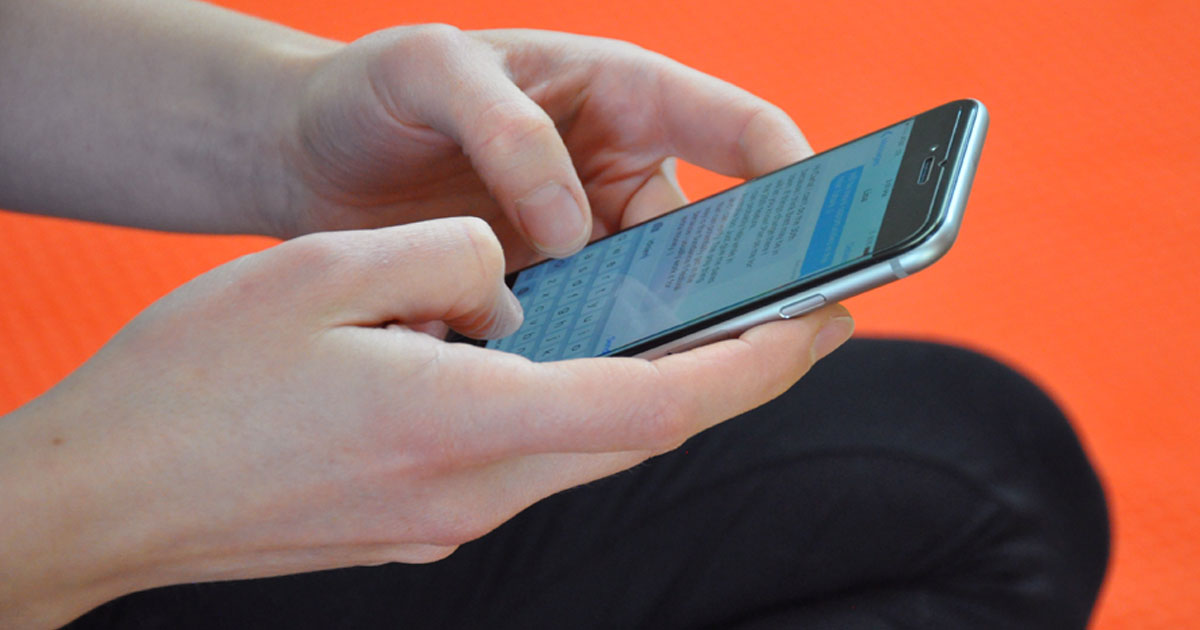
Text Neck, neck pain that develops as a result of looking down at our tech devices, has established itself as a bona fide 21st-century malady. Less known and talked about, but likely just as common, is Text Claw: pain in the hands, wrists and forearms that comes from plinking out texts and surfing the web on your smart phone.
When we punch numbers and letters into our phones, we have to curl our fingers and contract the palms of our hands. Over time the tension we create in the hands, wrists and forearms can turn into acute or chronic pain as we continually shorten the soft tissue.
Repetitive strain injuries are, of course, common in many kinds of habitual activities—typing, playing a musical instrument, working on a production line, sewing, painting, long-distance driving—you name it. Smart phone use is just one of the more recent and ubiquitous culprits that can produce repetitive strain injuries.
Medical Daily writes: “[Text claw is] the pain you get throughout your wrist and hands after constant use [of devices]. Sometimes this can lead to tendonitis, which causes wrist pain, aching, numbness, and the loss of strength. It can actually make you very miserable, and small tasks may seem hard to complete. However, this should not be confused with carpal tunnel syndrome, although swelling from tendonitis can actually cause carpal tunnel.”
Amanda L. Chan, in a 2013 article in The Huffington Post, writes: “Any sort of fine motor activity can lead to pain in the tendons or muscles, explains orthopedic surgeon Aaron Daluiski, M.D., chief of the Hand and Upper Extremity Service at NewYork-Presbyterian Hospital/Weill Cornell Medical Center in New York City. ‘There’s no specific diagnosis that arises from people using technology devices,’ he tells HuffPost. ‘If you were to be shucking corn or rolling cigars or anything else, it would probably be the same.’”
Since most of us don’t spend a whole lot of time shucking corn or rolling cigars, it’s probably safe to say that if we experience pain in our hands and wrists, it’s more likely to be attributable to pecking on a smart phone or typing on a keyboard.
If your hands or wrists feel uncomfortable in weight-bearing asanas, a Yoga Wedge (in cork or foam) can be a really helpful tool in poses such as Downward Facing Dog or Upward Bow.
In addition, there are specific yoga-based movements that can help release tension in your hands. Try these stretches when you start to feel tension in your hands, wrists or forearms.
Asana for Your Hands
1. Pull downward on your wrist flesh and circle your hand 5-10 times in each direction.
2. Gently pull out on each finger of each hand.
3. Interlace your fingers and stretch your arms out in front of you, turning the palms away from you. Stay for 5 to 10 breaths and switch the interlacing of your fingers and repeat.
4. Do an upside down and backwards “Namaste”.
5. Extend your fingers, at least two at a time. Extending just one finger at a time can cause hyperextension. Stretching at least two fingers at the same time will protect your joints. Try these different combinations: index and middle, middle and ring, ring and pinkie, index and ring, middle and pinkie, index and pinkie. As always, make sure you stretch both hands.
6. In a kneeling position, place your hands on the floor with your fingers pointing toward your knees. Press the heels of the hands into the floor. VERY slowly and gently move your pelvis toward your feet, but stay in your comfort zone. Stretching sensation is okay, but if it becomes uncomfortable, back off especially if you feel the discomfort in your wrist joints.Stand arm’s length from a wall. Place your palm, at shoulder level, against the wall with your fingers pointing up. Gently lift the heel of your hand slightly away from the wall and then lower it back down. Repeat this motion a few times. Turn your hand so that your fingers point backward, and repeat the process. Then point your fingers downward and repeat.
7. Stand arm’s length from a wall. Place your palm, at shoulder level, against the wall with your fingers pointing up. Gently lift the heel of your hand slightly away from the wall and then lower it back down. Repeat this motion a few times.
8. Turn your hand so that your fingers point backward, and repeat the process.
9. Turn your fingers downward and repeat.
10. Place one hand on the floor and spread your palm and fingers. Use the heel of your other hand to massage it, pressing gently into your hand as you slide the top hand from the wrist out through the fingers. Repeat several times, starting with the thumb side and moving progressively to the pinkie side, so that you cover the entire width of your hand. You also might want to do this a few times since it feels good!
None of these exercises is meant to substitute for traditional medical diagnoses or treatment. If you are experiencing hand, wrist or forearm pain, see a medical doctor or licensed physical therapist—a hand therapist would be very helpful—for a proper diagnosis and suggestions for addressing your condition.
